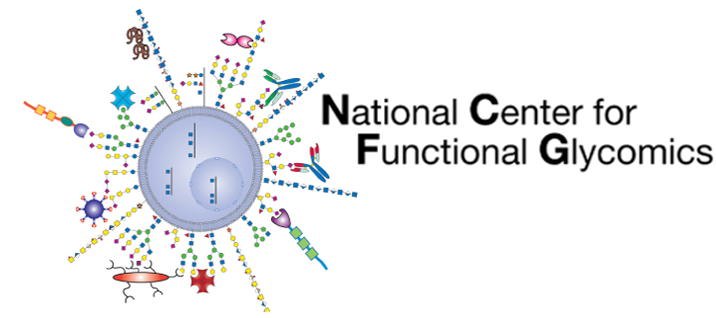By: Richard D. Cummings
The definition of a rare sugar is a monosaccharide that is found in small quantities relative to more common sugars in nature, e.g., glucose and N-acetylglucosamine (1-3). There are dozens of rare sugars that are recently gaining attention in regard to nutrition, metabolism, microbial diversity, etc. Interestingly, consumption of such rare sugars can often affect multiple pathways in mechanisms not completely understood, but since they are parts of the normal diet of humans in any case, they are generally considered safe. Such rare monosaccharide sugars include D-tagatose and D-allulose (3), and rare disaccharides include D-trehalose and isomaltulose (4). D-allulose (also called D-psicose/D-ribo-2-hexulose) is found widely in nature but not so far in humans (5,6). It is a ketohexose that the Food and Drug Administration (FDA) recently designated as Generally Recognized As Safe (GRAS) for use as a sugar substitute in various specified food categories (7). [https://www.fda.gov/media/151854/download] D-allulose is nearly as sweet as sucrose, but has a much lower caloric content than sucrose, as D-allulose is not readily metabolized by humans. A potential benefit also is that D-allulose can inhibit the breakdown of starches and some other sugars, as it acts as an enzyme inhibitor. A new method of producing allulose was recently reported, in which Escherichia coli was engineered to produce this sugar, which has major implications for use as a sweetener in the future (8). See a news article at https://newatlas.com/science/breakthrough-low-calorie-sugar-production/.
Another rare sugar not found in human glycomolecules is L-sorbose, a ketohexose. It is used in industry as a precursor to the synthesis of ascorbic acid (Vitamin C) (9). Recent studies found that L-sorbose may influence the microbiome as it can induce butyrate production by bacteria (10). In recent studies there is evidence that L-sorbose has some antitumor activity through its ability to impair metabolism (11). While the biochemistry of this effect is unclear, upon transport into cells, L-sorbose can be converted by ketohexokinase (KHK) into L-sorbose-1-phosphate (S-1-P), which appears to reduce activity of hexokinase, thus slowing cell growth.
Isomaltulose, which also goes by the name of palatinose, is a disaccharide counterpart of sucrose, except that it is a reducing disaccharide of D-glucose in α1,6-linkage to D-fructose. Isomaltulose is not as readily metabolized in the small intestine as sucrose (12). In the intestine, isomaltulose is a potential prebiotic and appears to be a positive effector on the gut microbiome (4). It is also interesting that an enzyme sucrose isomerase can convert the non-reducing sugar sucrose to the reducing sugar isomaltulose, and this is used for its production (13).
The ‘Periodic Table of Monosaccharides’ (14) presents a diversity of monosaccharides, including unusual ones such as tagatose, psicose, sorbose, and others, along with an interactive online version (https://glycotoolkit.com/Tools/periodic-table-of-monosaccharides/).
References
-
Ahmed, A., Khan, T. A., Dan Ramdath, D., Kendall, C. W. C., and Sievenpiper, J. L. (2022) Rare sugars and their health effects in humans: a systematic review and narrative synthesis of the evidence from human trials. Nutr Rev 80, 255-270
-
Van Laar, A. D. E., Grootaert, C., and Van Camp, J. (2021) Rare mono- and disaccharides as healthy alternative for traditional sugars and sweeteners? Crit Rev Food Sci Nutr 61, 713-741
-
Smith, A., Avery, A., Ford, R., Yang, Q., Goux, A., Mukherjee, I., Neville, D. C. A., and Jethwa, P. (2021) Rare sugars: metabolic impacts and mechanisms of action: a scoping review. Br J Nutr 128, 1-18
-
Lee, C. Y., So, Y. S., Yoo, S. H., Lee, B. H., and Seo, D. H. (2024) Impact of artificial sweeteners and rare sugars on the gut microbiome. Food Sci Biotechnol 33, 2047-2064
-
Hossain, A., Yamaguchi, F., Matsuo, T., Tsukamoto, I., Toyoda, Y., Ogawa, M., Nagata, Y., and Tokuda, M. (2015) Rare sugar D-allulose: Potential role and therapeutic monitoring in maintaining obesity and type 2 diabetes mellitus. Pharmacol Ther 155, 49-59
-
Mijailovic, N., Nesler, A., Perazzolli, M., Ait Barka, E., and Aziz, A. (2021) Rare Sugars: Recent Advances and Their Potential Role in Sustainable Crop Protection. Molecules 26
-
Chen, Z., Gao, X. D., and Li, Z. (2022) Recent Advances Regarding the Physiological Functions and Biosynthesis of D-Allulose. Front Microbiol 13, 881037
-
Taylor, J. E., Palur, D. S. K., Zhang, A., Gonzales, J. N., Arredondo, A., Coulther, T. A., Lechner, A. B. J., Rodriguez, E. P., Fiehn, O., Didzbalis, J., Siegel, J. B., and Atsumi, S. (2023) Awakening the natural capability of psicose production in Escherichia coli. NPJ Sci Food 7, 54
-
Gao, L., Du, G., Zhou, J., Chen, J., and Liu, J. (2013) Characterization of a group of pyrroloquinoline quinone-dependent dehydrogenases that are involved in the conversion of L-sorbose to 2-Keto-L-gulonic acid in Ketogulonicigenium vulgare WSH-001. Biotechnol Prog 29, 1398-1404
-
Sato, T., Kusuhara, S., Yokoi, W., Ito, M., and Miyazaki, K. (2017) Prebiotic potential of L-sorbose and xylitol in promoting the growth and metabolic activity of specific butyrate-producing bacteria in human fecal culture. FEMS Microbiol Ecol 93
-
Xu, H. L., Zhou, X., Chen, S., Xu, S., Li, Z., Nakanishi, H., and Gao, X. D. (2023) Rare sugar L-sorbose exerts antitumor activity by impairing glucose metabolism. Commun Biol 6, 259
-
Oosthuyse, T., Carstens, M., and Millen, A. M. (2015) Ingesting Isomaltulose Versus Fructose-Maltodextrin During Prolonged Moderate-Heavy Exercise Increases Fat Oxidation but Impairs Gastrointestinal Comfort and Cycling Performance. Int J Sport Nutr Exerc Metab 25, 427-438
-
Zhang, F., Cheng, F., Jia, D. X., Gu, Y. H., Liu, Z. Q., and Zheng, Y. G. (2021) Characterization of a recombinant sucrose isomerase and its application to enzymatic production of isomaltulose. Biotechnol Lett 43, 261-269
-
Cummings RD. A periodic table of monosaccharides. Glycobiology. 2024 Mar 19;34(1):cwad088. doi: 10.1093/glycob/cwad088. PMID: 37935401
